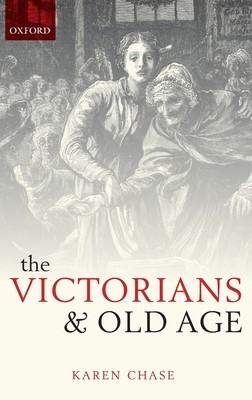
- We will send in 10–14 business days.
- Author: Karen Chase
- Publisher: Oxford University Press, USA
- ISBN-10: 0199564361
- ISBN-13: 9780199564361
- Format: 16.3 x 23.4 x 2.3 cm, kieti viršeliai
- Language: English
- SAVE -10% with code: EXTRA
Reviews
Description
Karen Chase examines old age as it was constructed in Victorian social and literary cultures. Beginning with the vexed relation between elderly people whose numbers and needs taxed the state which sought to identify, classify, and provide for them, she analyzes illuminating moments in narrative form, social policy, or cultural attitudes. The book considers the centrality of institutions and of the generational divide; it traces the power and powerlessness of age through a range of characters and individuals as distinct from one another as Dickens's inebriated nurse, Sairey Gamp, to the sober Queen Victoria; and it studies specific narrative forms for expressing heightened emotions attached to aging and the complexities of representing age in pictorial and statistical 'portraits'. Chapters are organized around major literary works set alongside episodes and artifacts, diaries and memoirs, images and inscriptions, that produced (and now illuminate) the construction of old age
through Victoria's long reign.
EXTRA 10 % discount with code: EXTRA
The promotion ends in 21d.16:59:45
The discount code is valid when purchasing from 10 €. Discounts do not stack.
- Author: Karen Chase
- Publisher: Oxford University Press, USA
- ISBN-10: 0199564361
- ISBN-13: 9780199564361
- Format: 16.3 x 23.4 x 2.3 cm, kieti viršeliai
- Language: English English
Karen Chase examines old age as it was constructed in Victorian social and literary cultures. Beginning with the vexed relation between elderly people whose numbers and needs taxed the state which sought to identify, classify, and provide for them, she analyzes illuminating moments in narrative form, social policy, or cultural attitudes. The book considers the centrality of institutions and of the generational divide; it traces the power and powerlessness of age through a range of characters and individuals as distinct from one another as Dickens's inebriated nurse, Sairey Gamp, to the sober Queen Victoria; and it studies specific narrative forms for expressing heightened emotions attached to aging and the complexities of representing age in pictorial and statistical 'portraits'. Chapters are organized around major literary works set alongside episodes and artifacts, diaries and memoirs, images and inscriptions, that produced (and now illuminate) the construction of old age
through Victoria's long reign.


Reviews